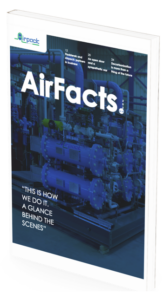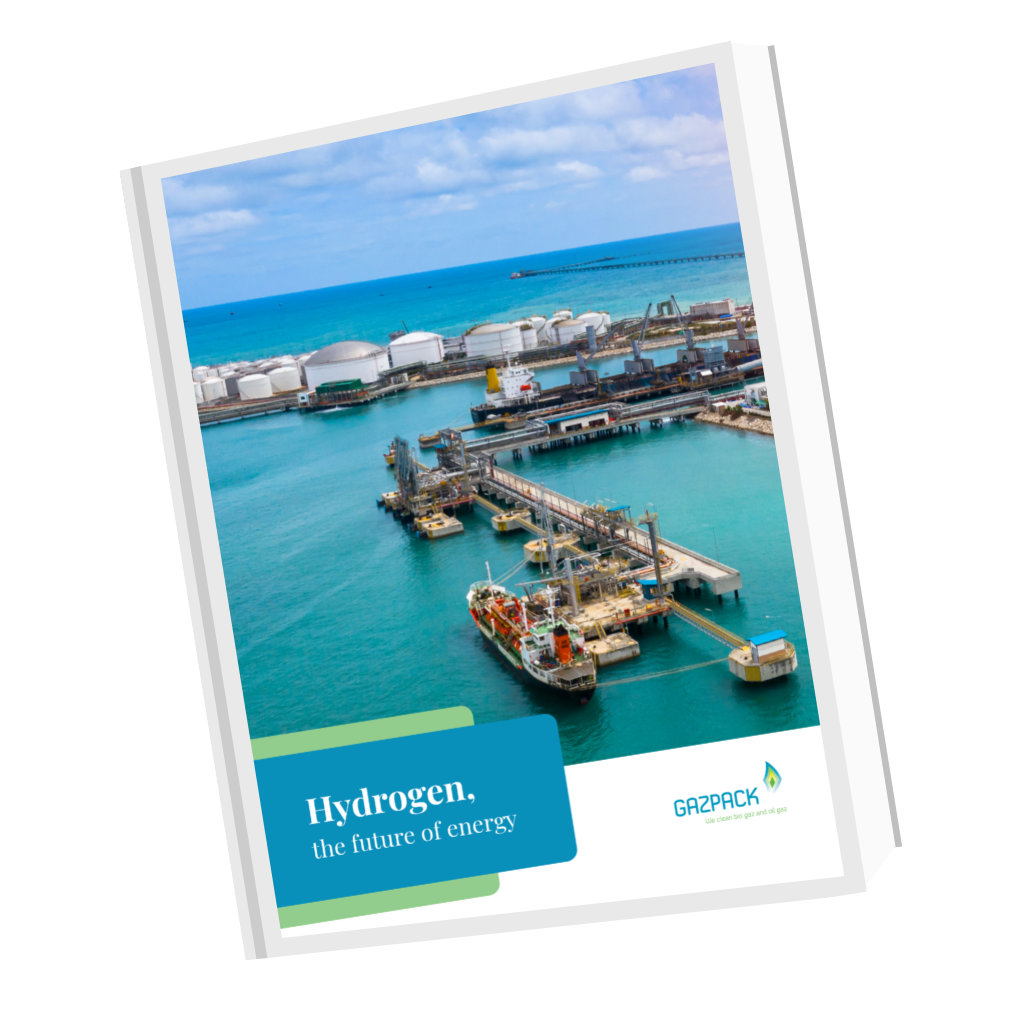Biogas Renewable Energy (RNG) Natural Gas Sustainability
Looking to explore the world of biogas processing and handling solutions? Get instant access to our documents about biogas technology.
The term renewable energy is intended to draw a contrast with fossil fuels. The product of dead plants and animal carcasses that have transmuted under the pressure of rock and sediment for millions of years, fossil fuel obviously takes a long time to form. Renewable energy, on the other hand, is captured quickly and is much more easily replenished. Examples of renewable sources include wind, hydro-power, solar and biomass. Like fossil fuels, biomass is basically organic matter. Unlike crude oil, coal and natural gas, however, biomass need not evolve over millennia. It can produce biogas renewable energy in a very short time.
A particular — or peculiar? — positive with regard to biomass is that it is most often composed of waste matter that would otherwise simply be discarded. Waste management is an industry predicted to take in over a half billion dollars in 2025. Cities are constantly redesigning schemes for municipal waste while farmers have long suffered headaches over surplus manure, often resorting to paying to haul it away. Yet waste takes on a new meaning when its energy potential is thrown into the mix. Properly processed and utilized, a large portion of dreck, scrappings, slop and offscourings can contribute to cleaner air, land and waters.
Getting Clean Energy Biogas from Biomass
Biogas is the effluvium that can now convert to electricity, and fuel vehicles as well as other heavy equipment. Carbon neutral, it is not implicated in global warming or climate change. Best of all, as long as people eat and consume; as long as plants and wildlife die and decompose; and as long as livestock defecate, there is little chance we will ever run short of biomass thereby assuring an abundant and continuous supply of biogas. How, then, is the latter derived from the former? How is biogas clean energy captured?
Anaerobic digestion is the process by which organic matter is broken down over several stages. When the biomass is cut off from all oxygen, bacteria form that disintegrate the organic matter, first to simple sugars, amino acids and fatty acids. Further fermentation yields volatile fatty acids, ammonia, carbon dioxide (CO2) and hydrogen sulfide. Acetic acid release follows and precedes the formation of methane (CH4), CO2 and water. The CH4 and CO2 are the primary constituents that make up renewable biogas. This emanation often requires treatment, e.g. removal of hydrogen sulfide, before it is safe and usable.
When the gas makes contact with solid carbon sorbents, the unwanted compounds are extricated from the biogas, leaving it in a form that threatens neither public health nor the infrastructure involved in transport and storage. At this point, this very sustainable gas can be injected into natural gas pipelines just like geologically-obtained natural gas. In a very real sense, biogas serves as a renewable natural gas or RNG gas. RNG gas has several advantages over its counterpart from the earth’s crust. Natural gas, though less of an emitter than coal and oil, still releases CO2 into the atmosphere whereas biogas adds no net carbon upon combustion. In addition, natural gas reserves, though plentiful, do not hold the promise of infinite natural gas sustainability like biogas does.
Using Biogas Renewable Energy
The natural gas renewable energy that is biogas has a number of practical applications, the primary being electricity generation. As a form of chemical energy, combusted biogas moves mechanical turbines that, subsequently, power generators to produce electricity. Such activity can work on a small scale — a farm, say — or in larger contexts like municipal water treatment utilities. Many biogas plants, wherever they are situated, sell excess electricity back to their respective regional power grids.
Biogas, or RNG natural gas, is also an innovative by-product of waste management in agriculture. As noted above, manure from cattle, swine and poultry grows exponentially on livestock farms and ranches. Traditionally, due to its properties as an organic fertilizer, it has been applied to fields and pastures, often with excellent results in terms of crop yields. Still, only so much can serve this purpose while, so much is left unused. Hauling it away is expensive. With anaerobic digestion, though, the manure can be processed in large volumes to produce RNG biogas. The energy can power the farm and contribute to the grid. Meanwhile, the leftover ash — digestate — is an even more effective nutrient for soil than raw manure. It can also be stored with no danger to human or animal health.
Not to be forgotten are transport vehicles like cars, trucks and buses. In fact, a train that runs on biogas has operated in Sweden for over 15 years. If a biogas plant exists where a fleet is parked, it becomes a very efficient fuel relative to miles per gallon. Compared to oil and gas renewable energy does little harm to the atmosphere.
In Summary
The use of anaerobic digestion to create biogas benefits the economy and the environment. Additionally, it is a boon to those that have to manage waste in cities, towns and on farms. The methane collected from the oxygen-free decomposition or organic matter, or biomass, is used for electrical power production, vehicular fuel and natural gas applications. This RNG renewable natural gas is constantly replenished unlike fossil fuel natural gas.




